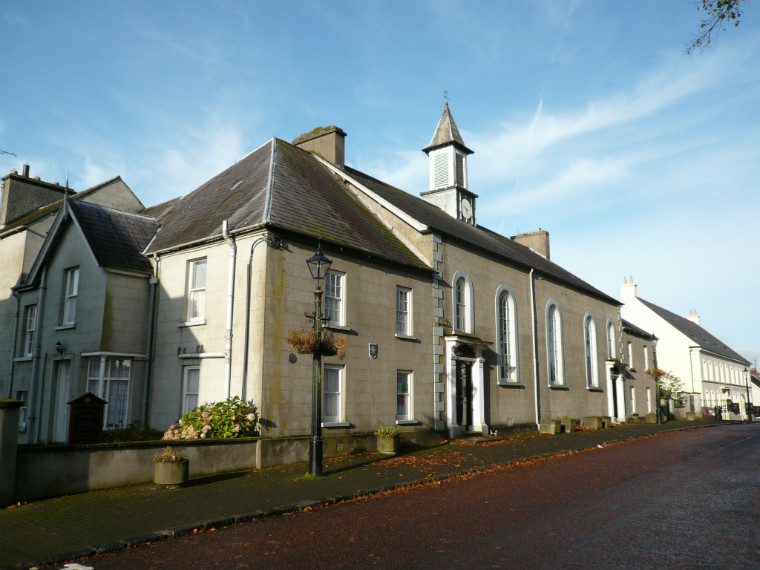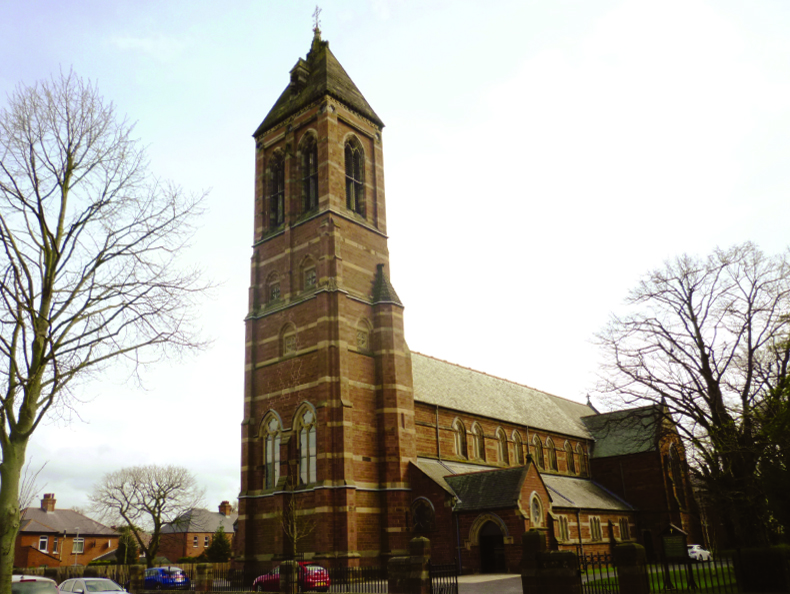Ecclesiastical
Portglenone First Presbyterian Church
Client: The Congregational Church Committee
Portglenone First Presbyterian Church is a Grade B listed nineteenth-century church with basalt walling and natural slate roofing. The main church is rectangular on plan with hipped slate-roofed 26 metre high tower located on its north-west corner.
MoreGracehill Moravian Church, Co. Antrim
Client: The Church Committee, Gracehill Moravian Church
Gracehill Moravian Church, along with the conjoined Manse and Warden’s House, is situated in the Gracehill Conservation Area, the first designated conservation area in Northern Ireland. Gracehill village was established as a Moravian Settlement in 1759 when land was leased and later purchased outright from Lord O’Neill. The church itself, built in 1765, is Grade A listed and remains the only Moravian Settlement in Ireland.
MoreGlenarm Non-Subscribing Presbyterian Church, Co. Antrim
Client: The Church Committee
Glenarm Non-Subscribing Church was built in 1762 on a plot of land given to the congregation by Alexander, Earl of Antrim, who at that time was making significant changes to Glenarm Castle and village. The Grade B1 listed church is a simple double-height rendered building with hipped roof; a gabled porch was added during the late 1800s.
MoreChurch House, Belfast
Client: Presbyterian Church in Ireland
Church House is a Grade B1 listed building occupying an entire city-centre block. It was built in 1900 to designs by Young and McKenzie in a loose style. In 2006, Alastair Coey Architects was appointed to prepare a comprehensive condition report on the external fabric of the building.
MoreSt Mark's Church, Dundela, Belfast
Client: The Select Vestry, St Mark’s Dundela
St Mark’s Church Dundela is a prominent landmark dominating Sydenham Hill in East Belfast, built to designs by the prolific High Victorian Gothic architect William Butterfield. The church is the only example of his work in Northern Ireland.
MoreSt Matthew's Church, Belfast
Client:The Select Vestry, St Matthew’s Church of Ireland
The Grade A listed St Matthew’s Church of Ireland was constructed between 1870 and 1872, to the designs of Welland and Gillespie. The unique appearance of the church is the Celtic revival Neo-Gothic style with round tower and slated curved roof.
MoreSt Patrick's Church, Glenarm
Client: The Select Vestry, St Patrick’s Church of Ireland
St Patrick’s Parish Church Grade B+ listed lies within the village boundary of Glenarm located close to the shore, on a slight outcrop immediately north of the mouth of the Glenarm River and harbour. The churchyard occupies the site of an important medieval friary of the Franciscan Third Order and above ground archaeology is clearly visible to the north of the present church. The site is bounded by metal railings, stone walls and timber fencing. The parish is called Tickmacreevan meaning ‘the house of the Macrevan’.
MoreCatholic Church, Omagh Hospital, Co. Tyrone
Client: Western Health and Social Care Trust
This Catholic Church forms part of a range of significant historic buildings associated with the site of Omagh District Asylum built c.1852, to designs by William Farrell, presently occupied by Omagh Mental Hospital (part of the Sperrin and Lakeland Trust). The Mental Hospital was one of the last of a second series of similar buildings to be erected throughout Ireland by the Irish Board of Works as part of a programme to provide facilities to deal with issues loosely related to mental health.
More






